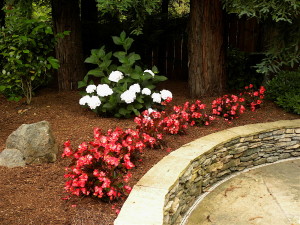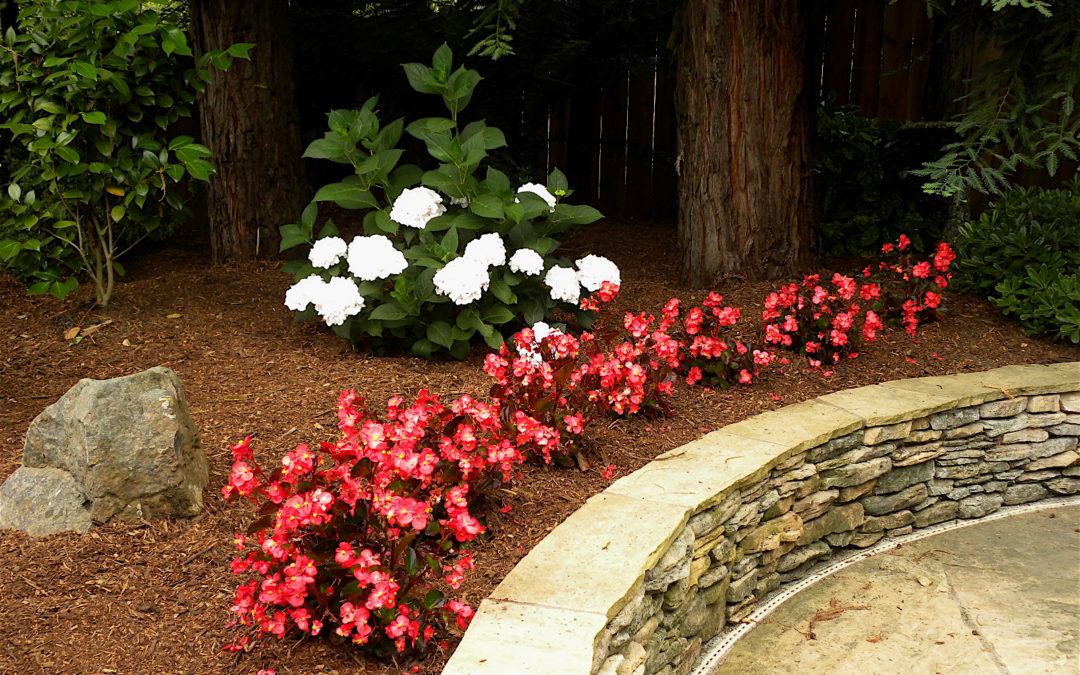Fine gardens need a finishing touch. After the trees and plants are in and dripped, and the low voltage lighting is installed, it is time for bark or mulch to cover all the drip tubing and lighting wire, and give the garden a finished look.

Bark serves two basic functions: First, it gives the garden a finished look, covering the dirt and the drip irrigation tubing and wires. Second, along with a pre-emergent herbicide, bark provides mulch that helps controls weeds.
Many companies install weed cloth or paper under the mulch to control weeds. We at Details Landscape Art believe these are inferior products, since weeds grow on top of them, and because they tear and shred, and become difficult to reinstall beneath the bark. It is true that pre-emergent herbicide is a chemical, but it is easy and inexpensive to install and a very effective weed control product.
There are several redwood products that we DON’T like, including different size chips and stringy ‘Gorilla Hair’. Redwood is a natural product that oxidizes rapidly, turning gray and then white, just like redwood fences. Fir bark, however, seems to weather more slowly, and has the added benefit of releasing acid, which is an important nutrient for many plants. There are dozens of barks available in the marketplace, but after years of trial and error we have chosen two that we like.We like a smaller, finer fir called ‘Mini fir’ which consists of smaller that packs down firmly over time. It is not easily kicked around.
Another bark product we like is ‘Black mini mulch’ which is a bark that has been dyed with a chemical. The dark look contrasts sharply with the green and red plant foliage and of course the flowers of a garden, yielding a striking look. We have been using the black mini mulch for only a few years now, and it appears to be holding its color nicely so far.
As we mentioned above, bark does oxidize over time, and homeowners may not like the grayish to whitish color. Also, when deciduous trees and plants drop their leaves in late autumn, gardeners usually rake up the fallen leaves. Unfortunately, during the process of raking and collecting these fallen leaves, some of the bark comes up also. So there is a need every couple of years or so to freshen up the bark. We have found, however, that it is not advisable to keep adding bark and adding bark, because over the years it builds up too much and the drip irrigation tubing and the lighting wire becomes so buried that it is difficult to find. If repairs are needed or additional emitters are required, it is so hard to find the tubing to work on since it is buried so deeply. Instead, since the bark only oxidizes on the very top exposed surface, rake off an inch the first time, and then two years later add an inch or so.
Fine gardens are finished off with a nice layer of bark, that show off the plants and help control weeds.

